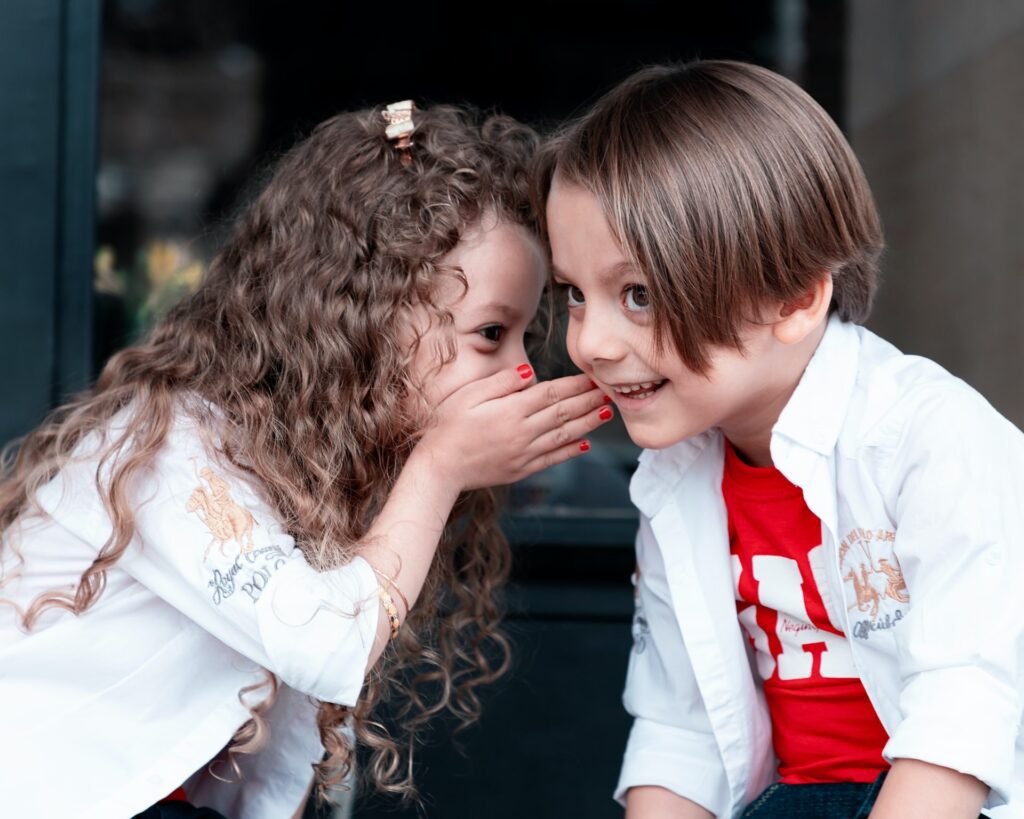Class Overview
Language does not exist in a vacuum; every time we use language, it’s shaped by communicative, cognitive, and learning pressures. In this class, we combine concepts from theoretical linguistics with the real-world setting of its use, providing an overview of language acquisition, psycholinguistics (language in the mind), and sociolinguistics (language in social settings).
The core idea of this course unfolds from the ways that our minds shape language individually, the core of psycholinguistics. As we understand the influence of individual minds on the language, we can move out to examine how interactions between people, and aspects such as communicative goals and social identities can shape the language: sociolinguistics. Psycho- and sociolinguistic influences, amassed over generations, lead to language change and standardization. And all of this structure is constrained by the fact that it must be learnable, generation by generation, through language acquisition.
The goal of this class is not only to discuss key concepts within these areas of linguistics, but to build bridges between them. Ideally, this will provide a chance for you to explore applications for your linguistic knowledge, and to spur new avenues for linguistic research. We also look at ways to bring social media and other emerging linguistic data sources into linguistic research to gain new insights into the interactions of languages, minds, and society.
Textbook
We use Julie Sedivy’s textbook Language in Mind as the building block for the first part of the class, as it provides a helpful overview of the state of research in language acquisition, psycholinguistics, and the basics of sociolinguistics. Throughout the class, we dive deeper into specific research papers on these topics, and they take on a more prominent role as the class progresses into sociolinguistics.
The course syllabus is available here.
Language Acquisition
By the time you’re an adult, it’s really easy to forget that you needed to learn language in the first place. Years of relatively effortless language use can make it seem like a trivial task. But the second you step inside a language classroom, that misconception evaporates. So how do kids do it, and why do they seem so much better at it than us adults?
In this portion of the class (Weeks 1-4), we examine what, if any, linguistic structure children are born with, and what they build through exposure to other people’s language use. We discuss the innatist vs. emergentist perspectives, Universal Grammar and linguistic relativism (e.g., the Whorf hypothesis), and probablistic rational models of acquisition.
We cover chapters 4 and 5 of the textbook, along with the following papers: Maye et al 2002 (data visualization), Yurovsky et al 2017, Gentner & Goldin-Meadow 2003, and Braginsky et al 2016.
Additional readings that may be useful for this topic are in this Google Drive.
I’ve also made a some introductory notes on reading linguistics research papers. The first is a video where you can read along with me on the Maye et al paper. The second is a set of notes on the Yurovsky et al paper.
Psycholinguistics
Psycholinguistics is all about the representation of language in the mind. Have you ever wondered why some sentences are harder to understand than others? Have you ever had a word stuck on the tip of your tongue? Ever said something that was perfectly clear to you but incomprehensible to everyone else?
Much of this comes from the fact that language has to filter not only through the brain of the producer but of the audience as well. Understanding the ways that language is structured in the mind can help us understand why some linguistic tasks are easy and others are hard.
We introduce probabilistic frameworks for understanding cognitive pressures on language, including Bayesian analysis and the Rational Speech Act model.
This covers Chapters 8 through 10 of the textbook, as well as the following papers: Ferreira & Patson 2007, Doyle & Frank 2015, Goodman & Frank 2016, Yoon, Tessler, et al 2016, and Keysar et al 2012.
Additional readings on psycholinguistics can be found here.
I’ve made some notes on the RSA model to accompany Goodman & Frank 2016, as well as some notes on probability in psycholinguistics more generally.
Sociolinguistics
As we think about not just our own minds’ influences on language, but also other people’s, we are inevitably driven toward sociolinguistics, the study of how language is shaped by its use and users. We mainly consider cognition-focused aspects of sociolinguistics in this class, examining speaker and audience design, communicative goals, and assertions of identity. We also look at how small social & cognitive pressures can build up over time into language change on the historical level.
This covers Chapter 11 of the textbook, as well as the following papers: von der Malsburg et al 2020, Clark & Schaefer 1987, Guydish & Fox Tree 2021, Nevalainen & Raumolin-Brunberg 2003, Wagner 2012, Coupland 1998, Labov 1963, Eckert 2012, Eckert 2011, Lewis et al 2014, Mahowald et al 2012.
Additional readings on sociolinguistics can be found here.
images sourced from unsplash



